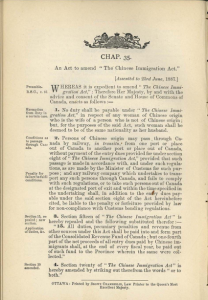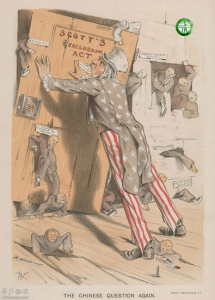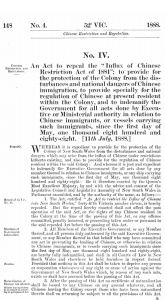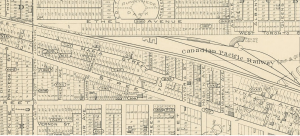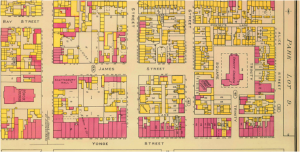
In 1887, amendments to the Chinese Immigration Act expanded the list of people who were exempted from the bill. Chinese individuals passing through Canada via railway were exempt from the head tax. Individuals boarding the train were not permitted to be taxed for every province they passed through. Although ultimately motivated by racist thinking; by providing a discounted service by which to travel made, it easier for workers to move farther east, and thus closer to Toronto.
In 1888, America came out with The Scott Act. The law prohibited the immigration of virtually all Chinese people by effectively rescinding certificates of re-entry for any Chinese abroad for twenty years. This stipulation would apply to all unless they had assets worth at least $1,000 or immediate family living in America, which of course was unreasonable considering the average income of a Chinese immigrant at the time. The result of this law left about 20,000 – 30, 000 Chinese immigrants stranded just outside the US.


The Chinese Restriction and Regulation Act of 1888 was drafted for the express purpose of amending the flow of Chinese immigration due to the gold rush at the time. One stipulation of the bill stated that one Chinese male was permitted to enter Australia for every 300 tonnes of the vessel carrying him. The bill also raised the poll tax to £100 and also effectively ended the practice of exemption certificates within Australia. This made it incredibly difficult for any Chinese immigrant to possess the correct papers to enter Australia legally.
My ministers desire me to refer you to their Minute of 21st Nov respecting destitution among Chinese recently dismissed from Dominion railway works, to request I may be informed by telegraph how far Dominion govt will be prepared to assist in extending immediate relief as considerable numbers of these wretched creatures are now reduced to actual starvation
In 1887, the Canadian Pacific Railway moved its terminus from Port Moody to Vancouver. The railway was quickly profitable and paid back its loans from the Federal Government years ahead of schedule. As a result, the success of the CPR bolstered confidence in the government to green light an additional branch line between Sudbury and Sault Ste. Marie, where Canada connects to the US railway. Within the same year, work began on a line from London, Ontario, to the American border at Windsor, Ontario. The connection of the additional terminals and the expansion of the CPR lines farther east, lends credence to the fact that Chinese immigrants were pushed towards Toronto.
After the final adjustments to the CPR in the late 1880’s, the terminals had been in use for years at select branches. In Toronto, the only CPR terminal ended just a few blocks South of the ward.
Notice how the ward is primarily tight knit dwellings which are all made of lumber. Housing in a particular area which is primarily made of wood is typically indicative of a lower income area. Not only does this cost less to use than brick, but it is also extremely easy to catch fire. As an immigrant coming off the train and looking for a place to stay, it would make sense that they would settle a long the ward as there was already an immigrant community here. Coming off the CPR, you would also need to find work and a general livelihood to generate income, which would explain how Chinatown was formed.

